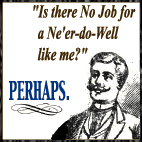
Vol. 2, Issue 22, June 1, 2004







Researchers Close to Understanding "Turn Signals"

Researchers at Stanford University have announced that they are close to "a major breakthrough" in understanding the role of a mysterious electrical system surreptitiously installed on virtually every vehicle sold in the United States.
"We are confident that the latest run of tests conducted in collaboration with the Lawrence Livermore National Laboratory will enable us to verify whether several popular hypotheses hold water," said Calvin Harper, professor of Electrical Engineering.
The system was discovered accidentally during forensic analysis of a vehicle destroyed by a car bomb in Seattle in 1983. During reconstruction of the vehicle, analysts found an extra electrical system with "no apparent function" which was integrated into the design of the car. Subsequent analysis found the system was actually present in virtually every make and model of vehicle sold.
The rogue circuit is typically connected to a control rod protruding from the steering column on the left. It activates half of the hazard lights when raised or pushed down. Activation of the circuit is accompanied by a soft clicking sound and one of two flashing lights on the dashboard.
"I wish I could shed light on this," said Louise Goeser, vice president for quality control at Ford Motor Company. "That system has been part of our standard designs since World War II, and I honestly can't tell you what it's for. Our engineers are convinced that removing it would be catastrophic, however. They're a very superstitious lot."
Various theories have circulated for years, speculating that the mysterious blinking lights or "half-hazards" are part of a civilian defense program, or that they regulate the electromagnetic field of the car in some undetermined way. Auto manuals label the system as a "turn signal."
"Of course, it is obvious that activating this system does not actually turn the vehicle," noted Harper, "so the name "turn signal" is clearly a misnomer. I cannot think of a practical use for activating half of your hazard lights during a turn anyway. In any event, virtually no one is aware of the system or makes use of it."
Some states, such as California, have proposed incorporating the system into the traffic code in some useful manner.
"One could, for example, activate the lights on the left hand side of the car to indicate in advance one's intention to perform a left hand turn," speculated California Secretary of Transportation Jeffrey Goldberg. "That would, however, only prove useful if we could somehow teach other drivers to understand and respond to such a visual cue. Right now we are still working on teaching people how to decipher the traffic light code. For the record, "red" means "stop.""
The Stanford researchers suspect that the system is actually a covert military communications system left over from the cold war.
"The clicking of the "turn signal" system is remarkably reminiscent of Morse code," said Harper. "I'm sure the systems are just vestigial relics at this point, but it will be fascinating to see what kind of data we have all been transmitting all these years."






